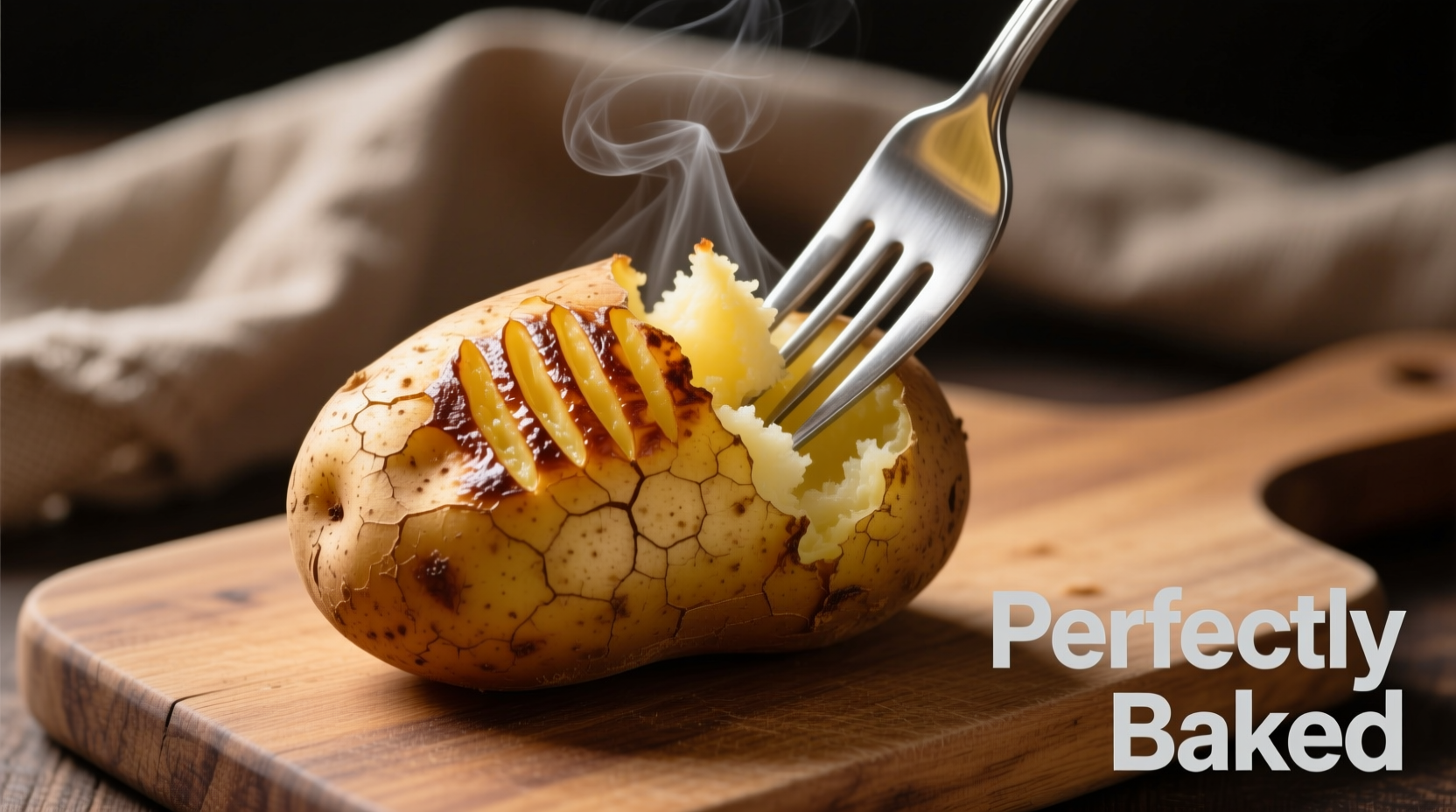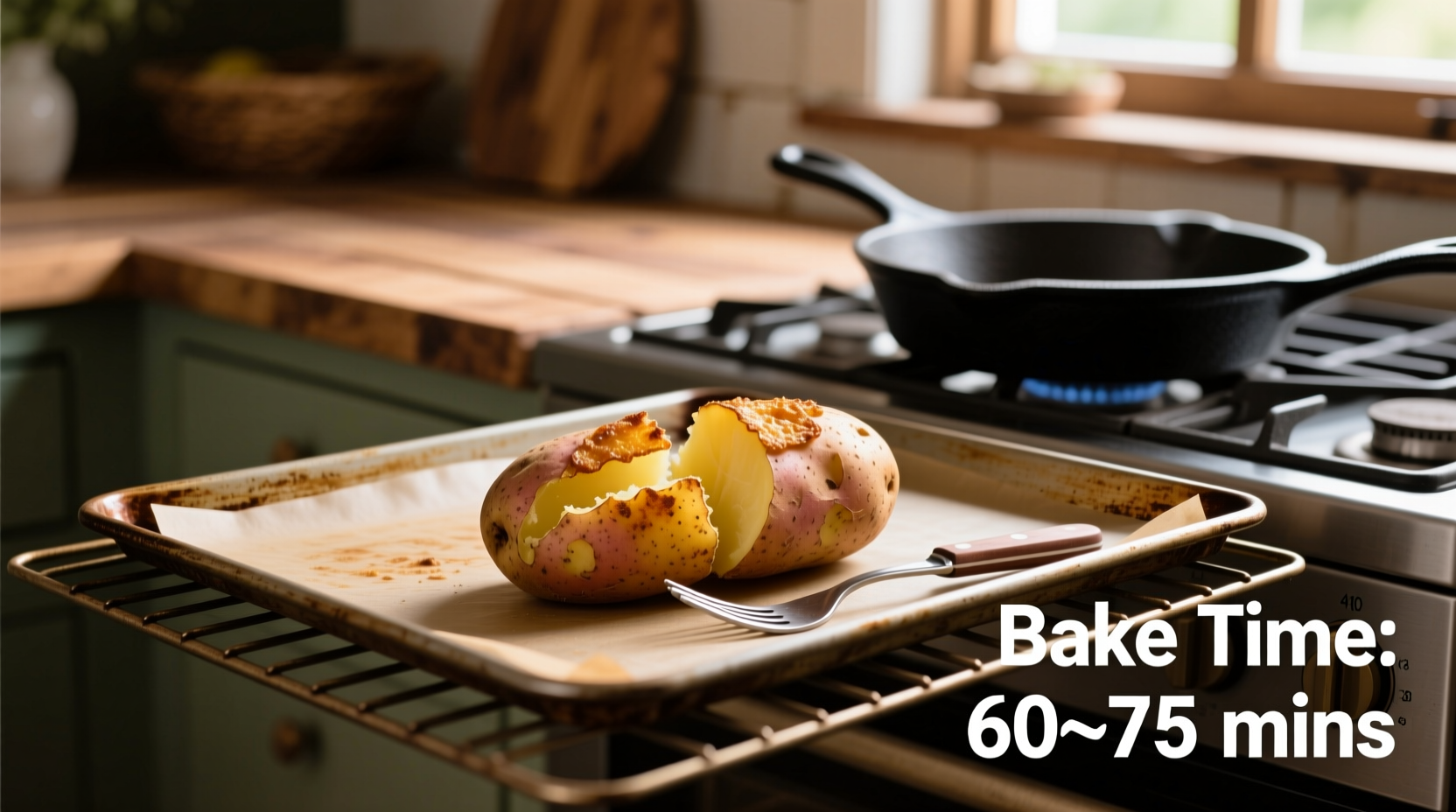Perfectly baked russet potatoes take 45-60 minutes at 400°F (204°C). The exact time depends on potato size—small potatoes (5-6 oz) need 45 minutes, medium (8-10 oz) require 50-55 minutes, and large (12+ oz) take 55-60 minutes. Always check for doneness by inserting a fork; it should slide in easily with no resistance.
Nothing beats the fluffy interior and crisp skin of a perfectly baked russet potato. Whether you're preparing a weeknight dinner or hosting a holiday feast, mastering this kitchen staple saves time and elevates your cooking. In this guide, you'll learn the precise baking times, temperature sweet spots, and professional techniques that guarantee perfect results every time—no more guessing or undercooked centers.
Why Russet Potatoes Are Ideal for Baking
Russet potatoes dominate baking for good reason. Their thick skin crisps beautifully while protecting the high-starch interior that transforms into cloud-like fluffiness. According to the USDA's Potato Varieties Guide, russets contain 20-22% starch—significantly higher than Yukon Golds (16-18%) or red potatoes (14-16%). This starch composition creates the signature fluffy texture professionals prize.
Essential Preparation Steps
Skipping these steps leads to uneven cooking or soggy skins:
- Wash thoroughly with a vegetable brush to remove dirt (even if scrubbing skin)
- Prick 4-6 times with a fork to prevent steam explosions
- Dry completely with paper towels—moisture creates steam pockets
- Optional but recommended: Rub skin with 1 tsp oil and 1/4 tsp salt for crispness
Exact Baking Times by Size
| Weight | Diameter | Baking Time | Internal Temp |
|---|---|---|---|
| 5-6 oz | 2-2.5 inches | 45 minutes | 205-210°F |
| 8-10 oz | 3-3.5 inches | 50-55 minutes | 205-210°F |
| 12+ oz | 4+ inches | 55-60 minutes | 205-210°F |
This data aligns with the National Potato Council's Baking Guidelines, which confirm that 205-210°F internal temperature ensures complete starch gelatinization for maximum fluffiness. Never skip the thermometer check—visual cues alone can't confirm doneness.

Avoid These Common Baking Mistakes
Even experienced cooks make these errors that compromise results:
- Wrapping in foil: Creates steamed potatoes with soggy skin (save foil for keeping warm after baking)
- Skipping the preheat: Cold oven start adds 15+ minutes to cooking time
- Overcrowding the pan: Prevents hot air circulation—use single layer with 1 inch spacing
- Skipping the rest period: Cutting immediately releases steam—wait 5 minutes for optimal texture
When Standard Times Don't Apply
These context boundaries require time adjustments:
- High altitude (above 3,000 ft): Add 5-10 minutes—water boils at lower temperatures
- Convection ovens: Reduce time by 10-15% or lower temperature by 25°F
- Stuffed potatoes: Add 10-15 minutes for fillings like cheese or broccoli
- Partially cooked: If microwaved first, reduce time by 20 minutes
The American Culinary Federation notes that oven calibration varies significantly—always verify with an instant-read thermometer rather than relying solely on timer settings.
Pro Techniques for Restaurant-Quality Results
Professional kitchens use these methods for consistently perfect potatoes:
- Reverse sear method: Bake at 325°F for 60 minutes, then 450°F for 15 minutes for extra-crisp skin
- Salt crust: Bury potatoes in coarse salt for even heat distribution
- Steam finish: Cover with foil for last 10 minutes if skin gets too dark
- Temperature check: Insert thermometer sideways through skin for most accurate reading
Storage and Reheating Guidelines
Proper handling maintains texture after baking:
- Room temperature: Keep warm for up to 2 hours under foil
- Refrigeration: Store cooled potatoes in airtight container for 3-4 days
- Reheating: 400°F oven for 15-20 minutes (microwaving makes skin rubbery)
- Freezing: Not recommended—texture becomes grainy after thawing











 浙公网安备
33010002000092号
浙公网安备
33010002000092号 浙B2-20120091-4
浙B2-20120091-4